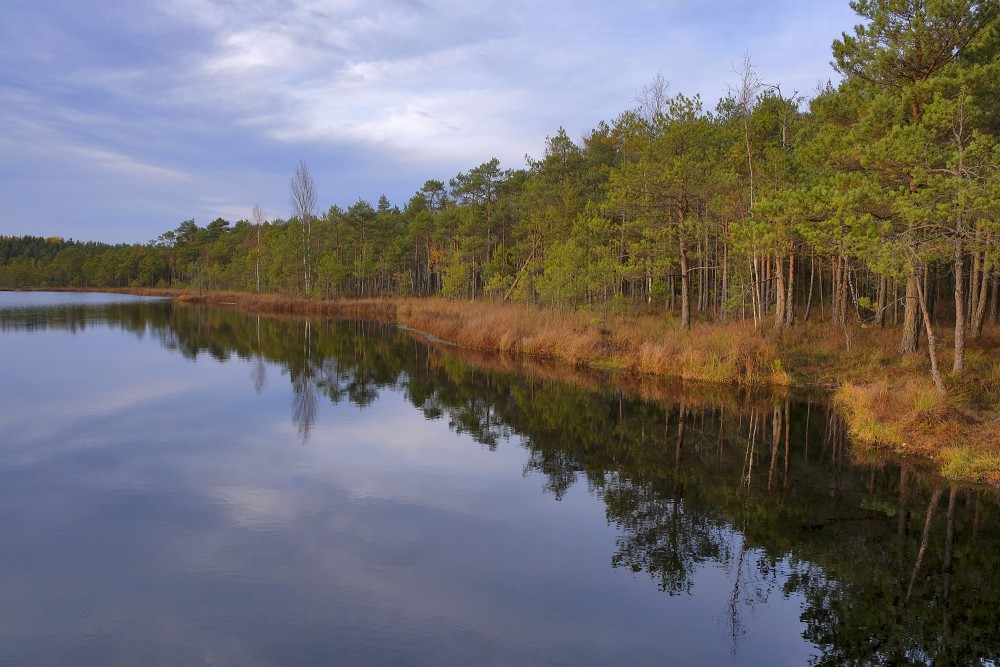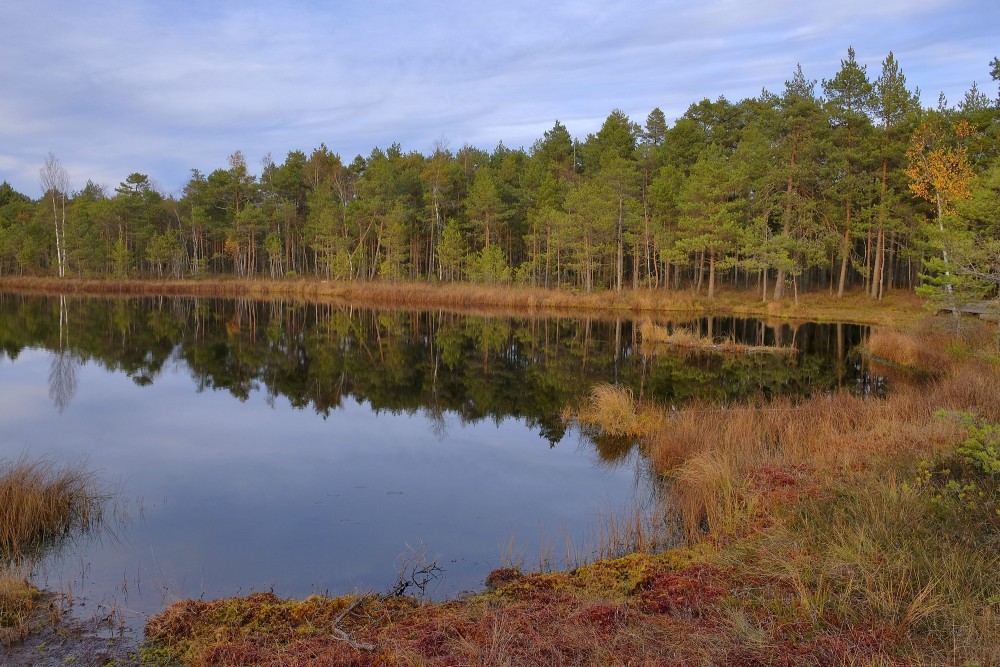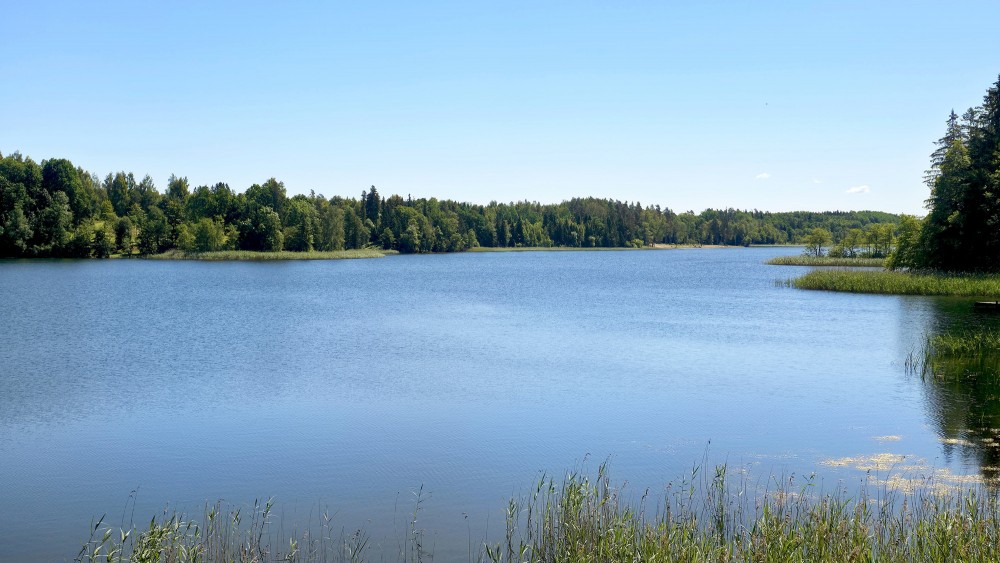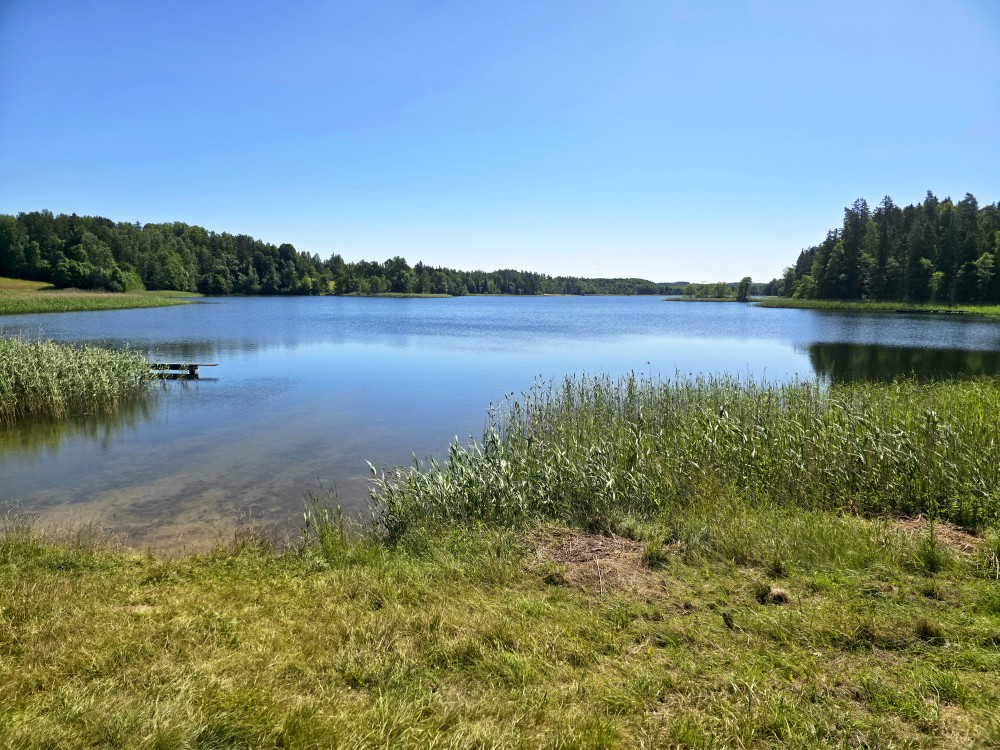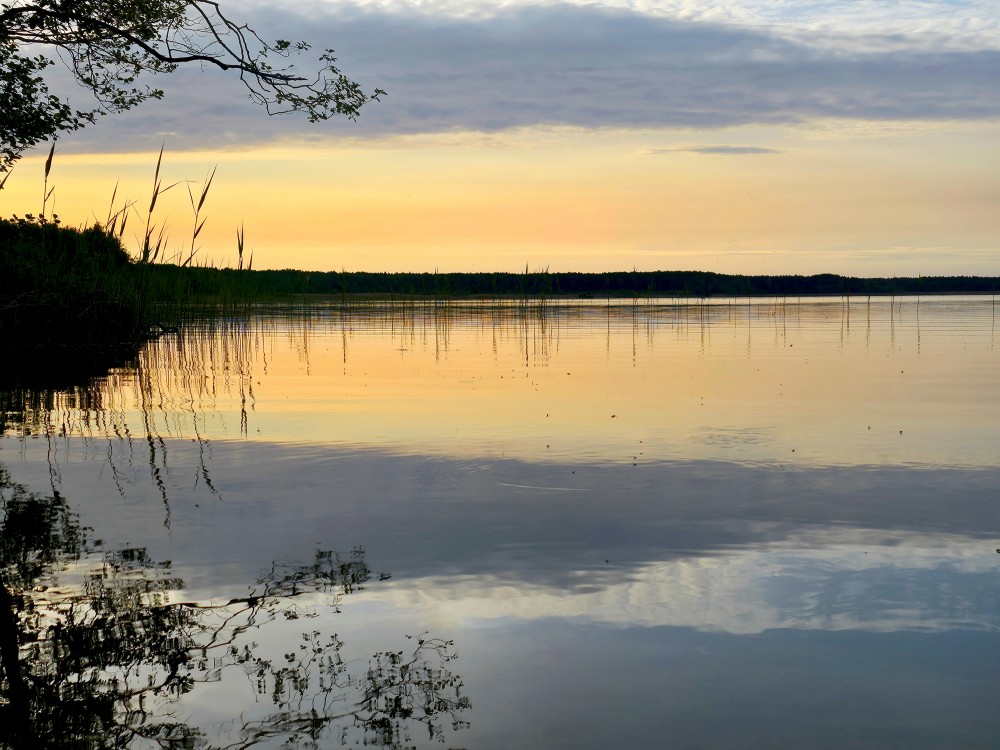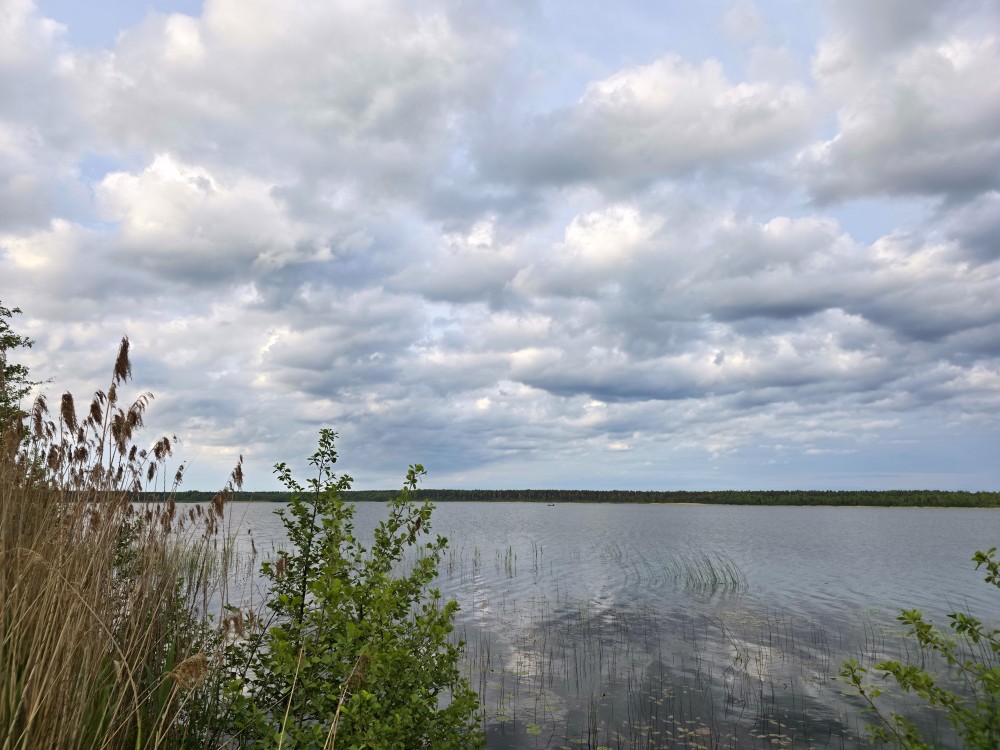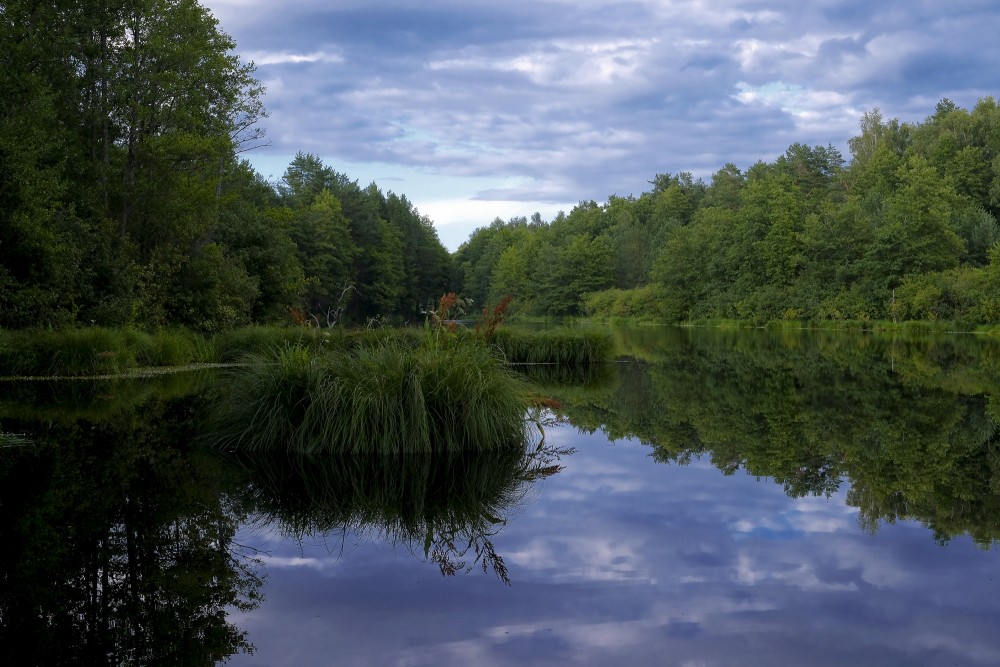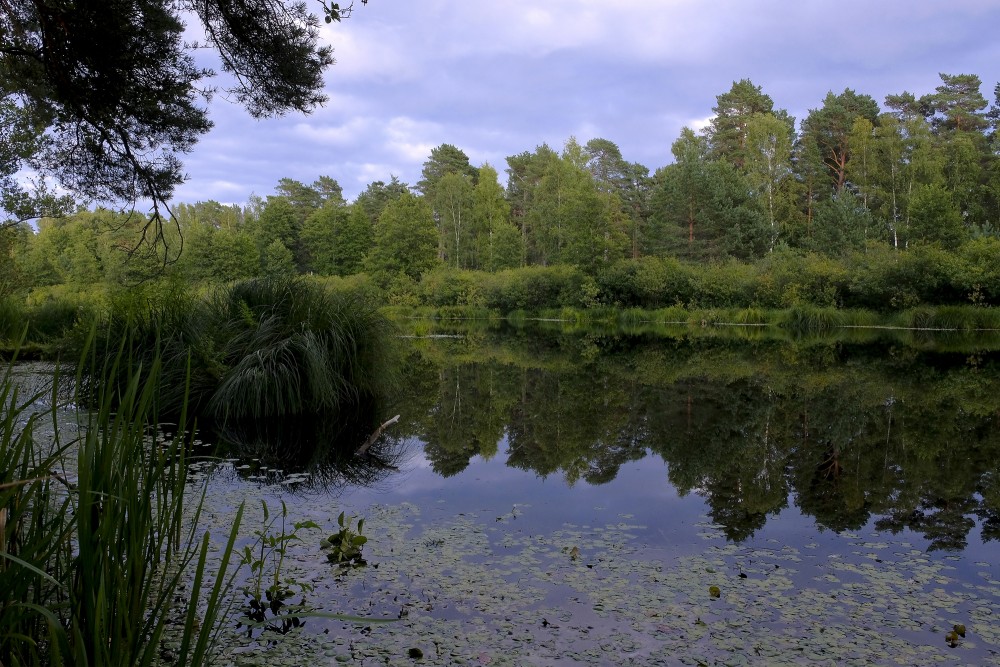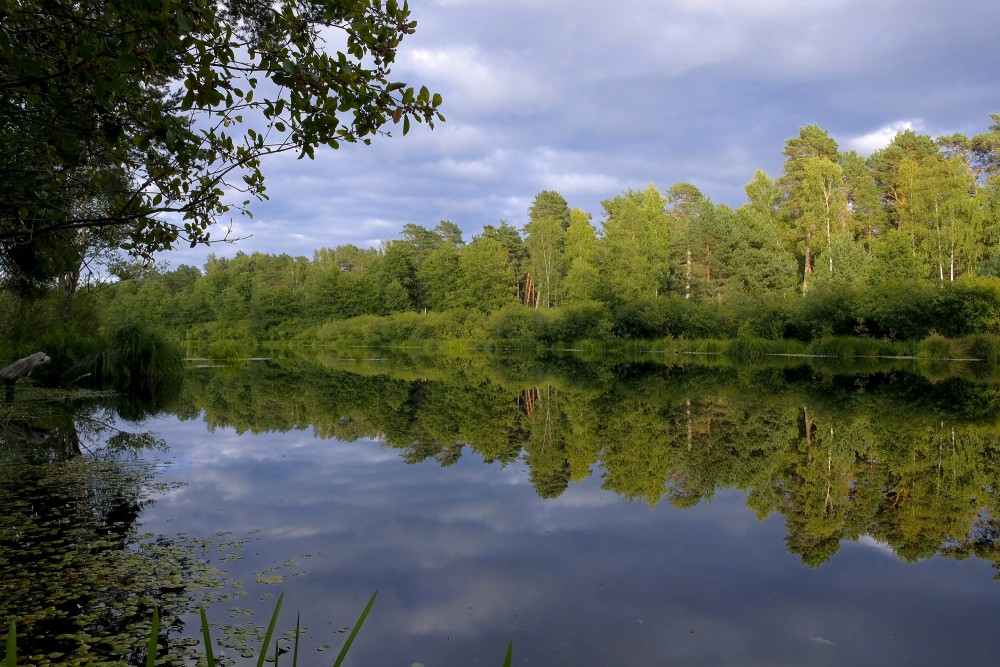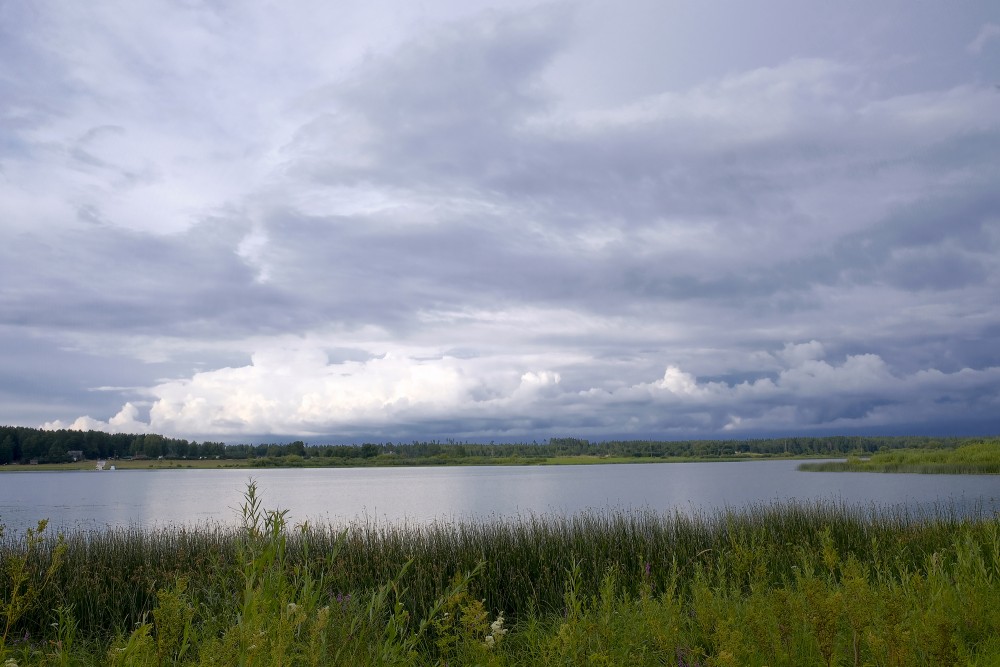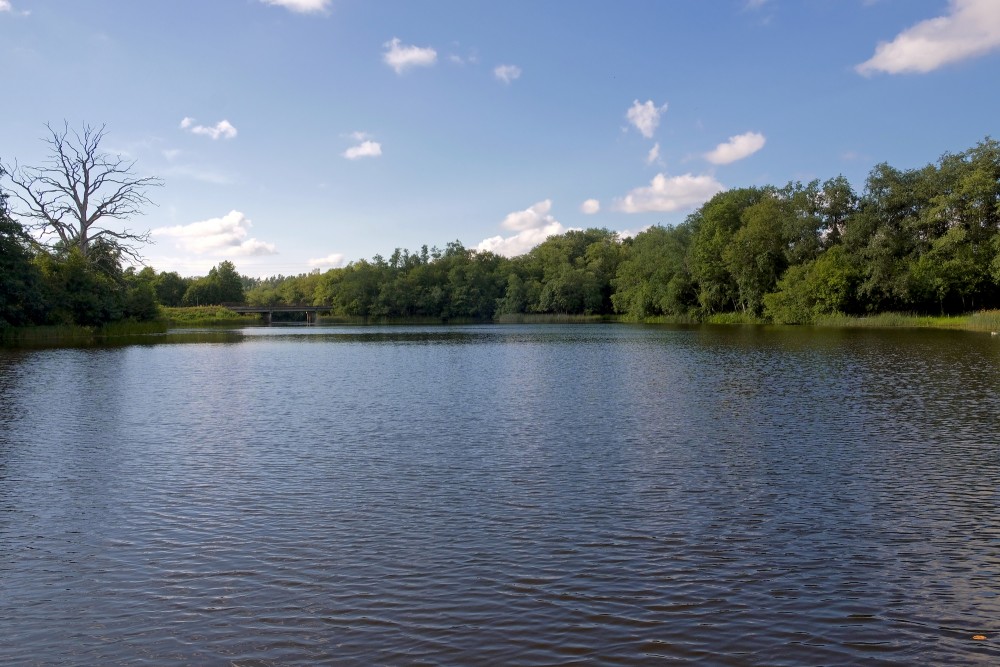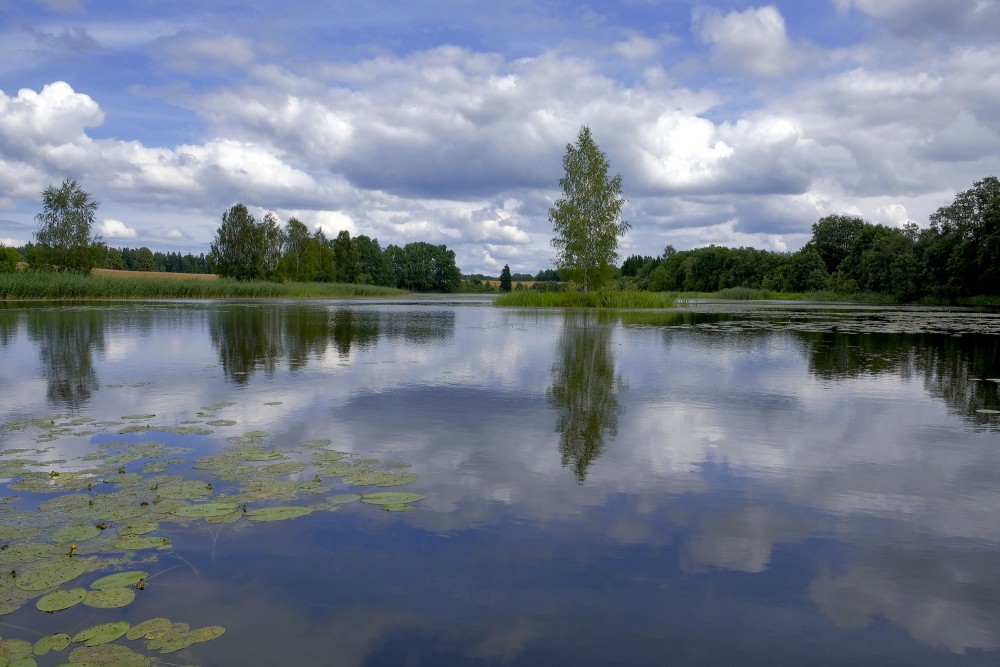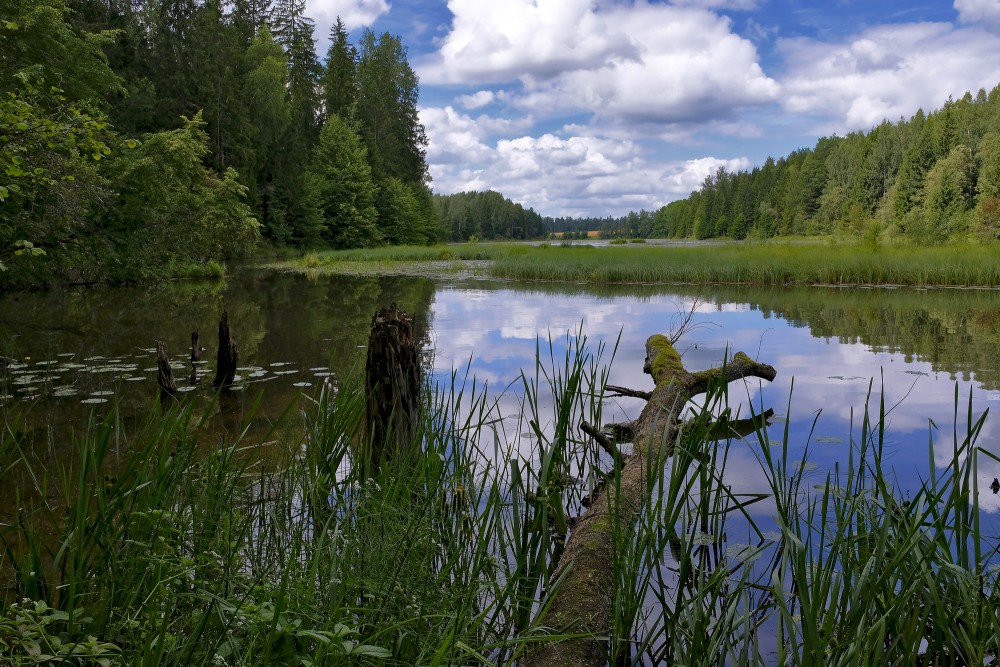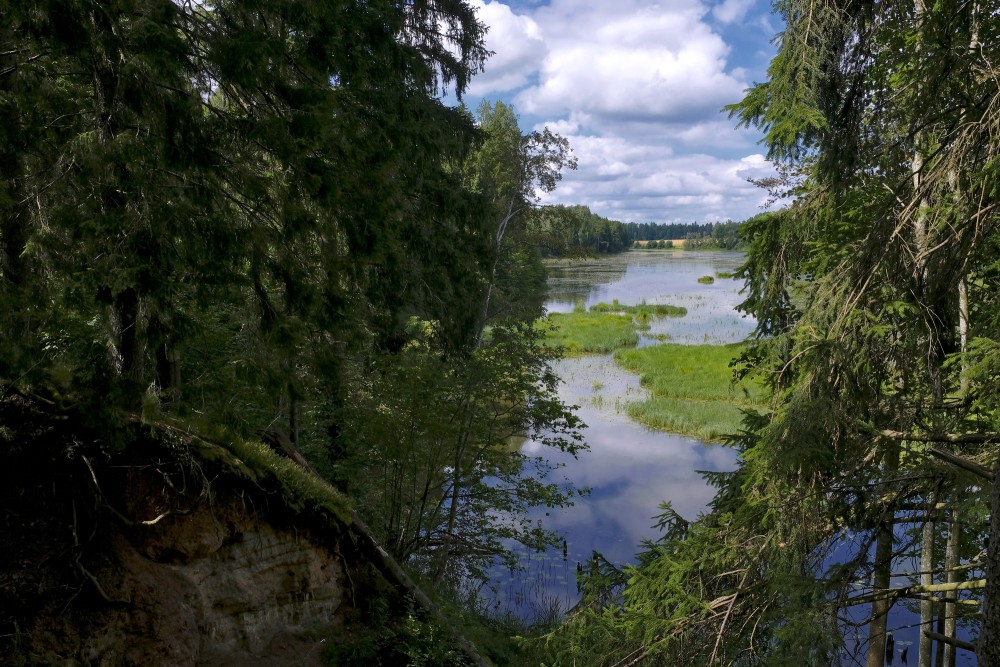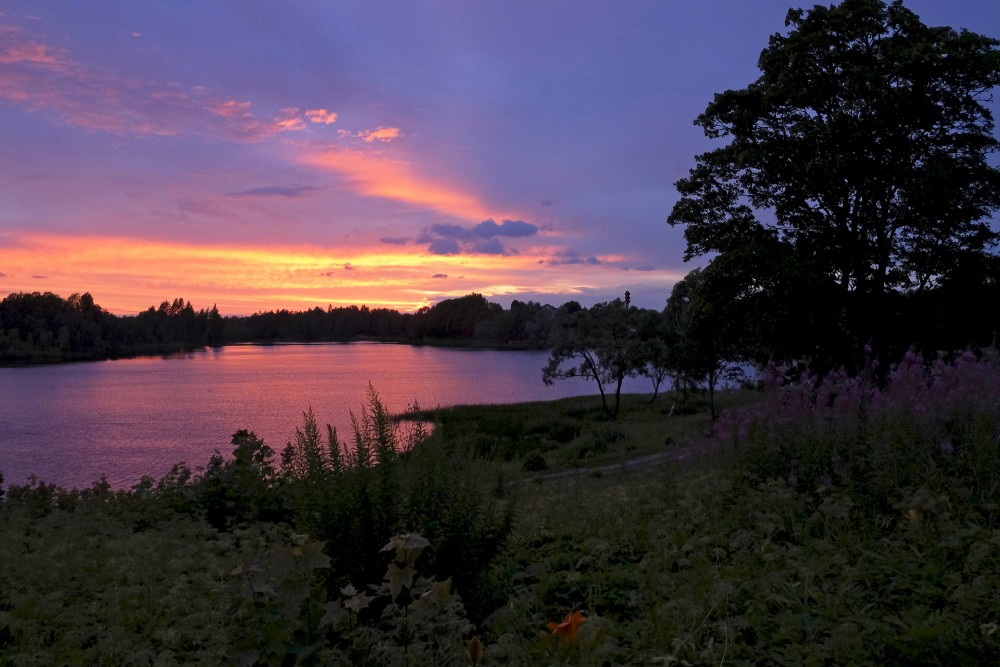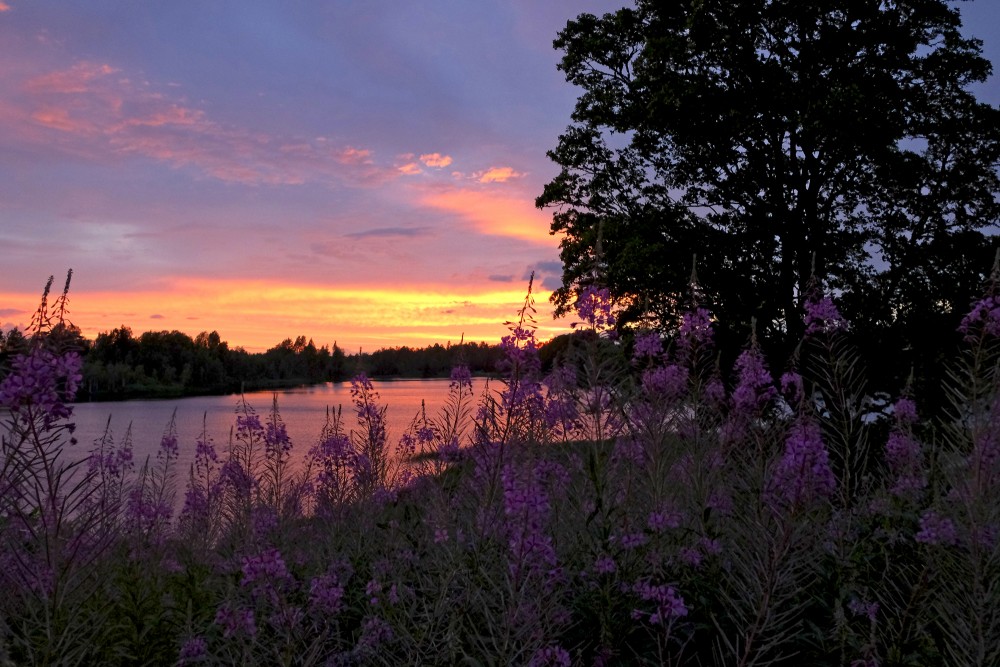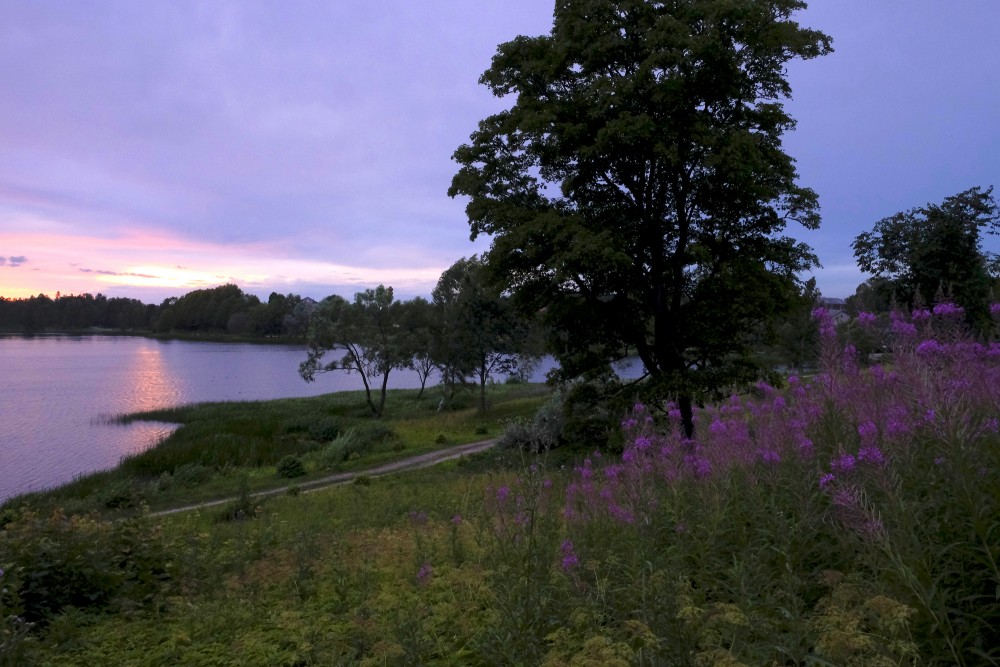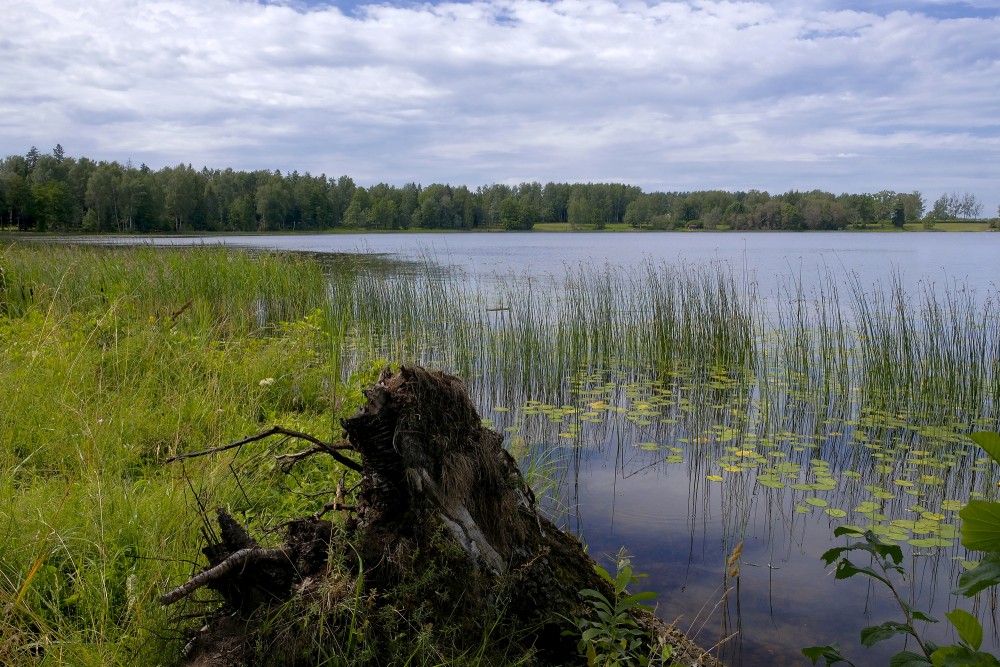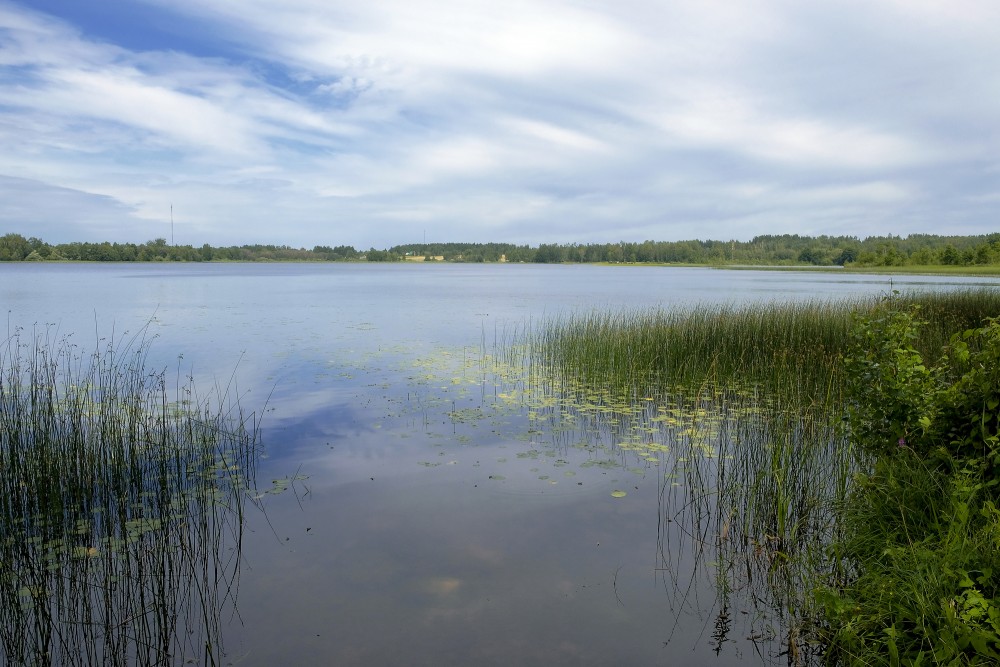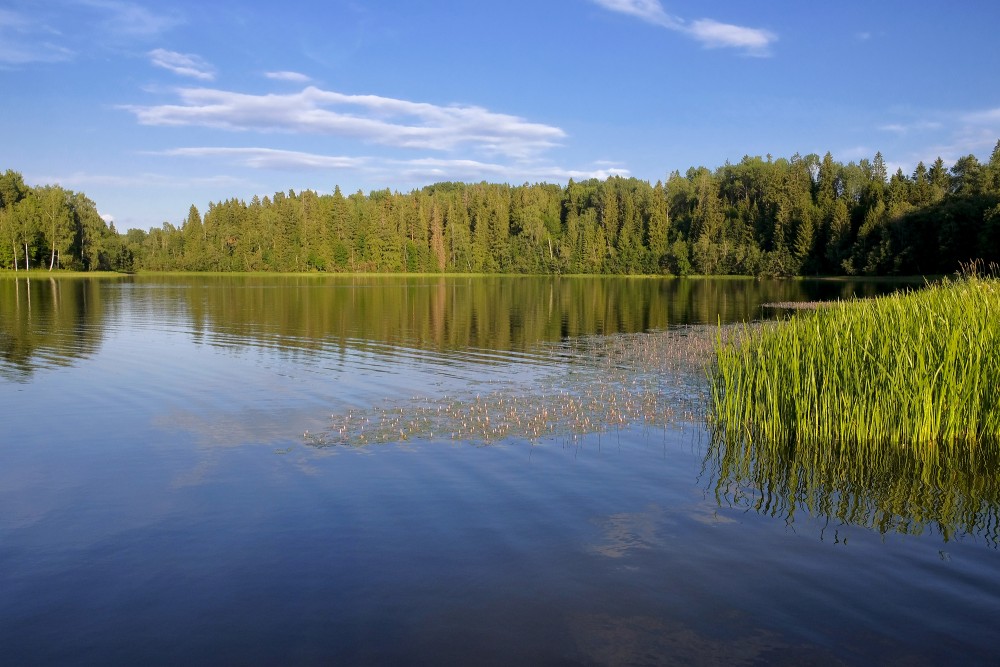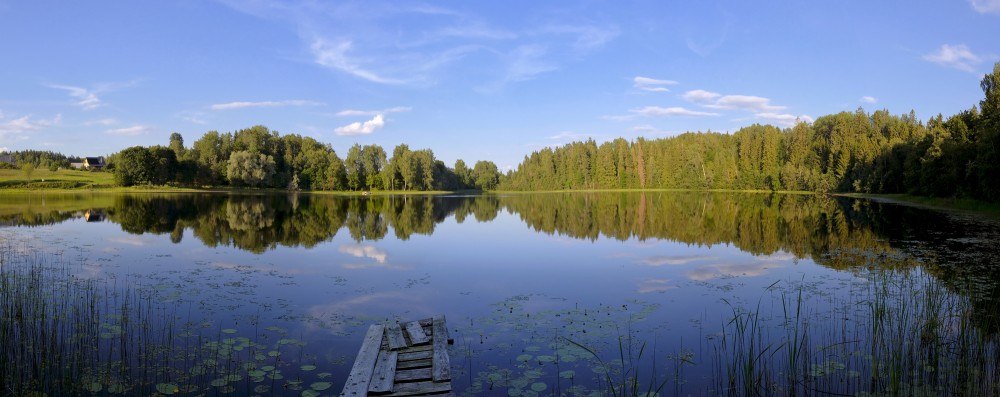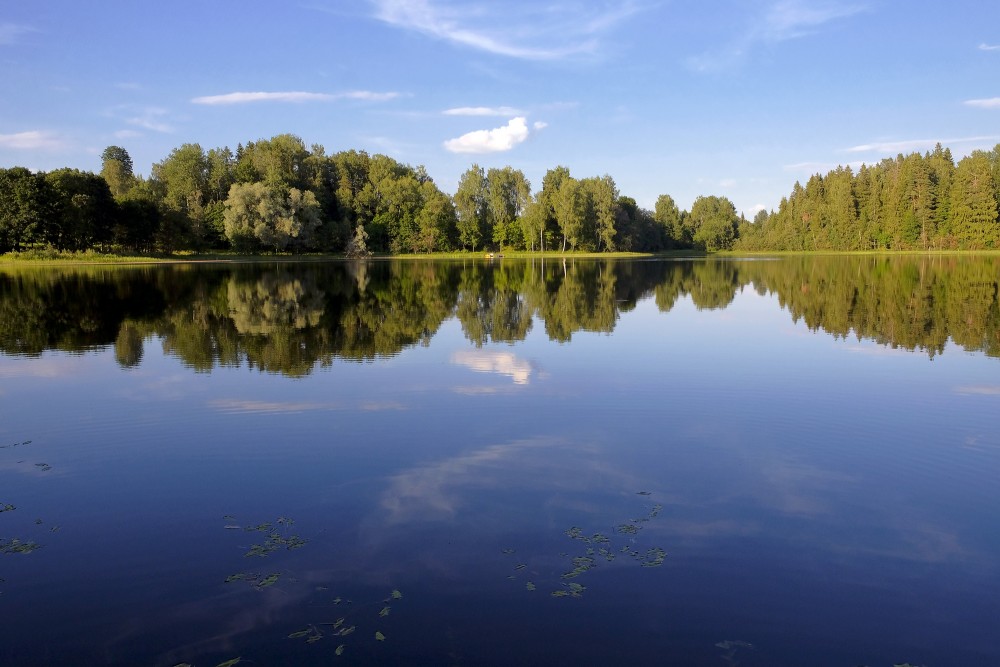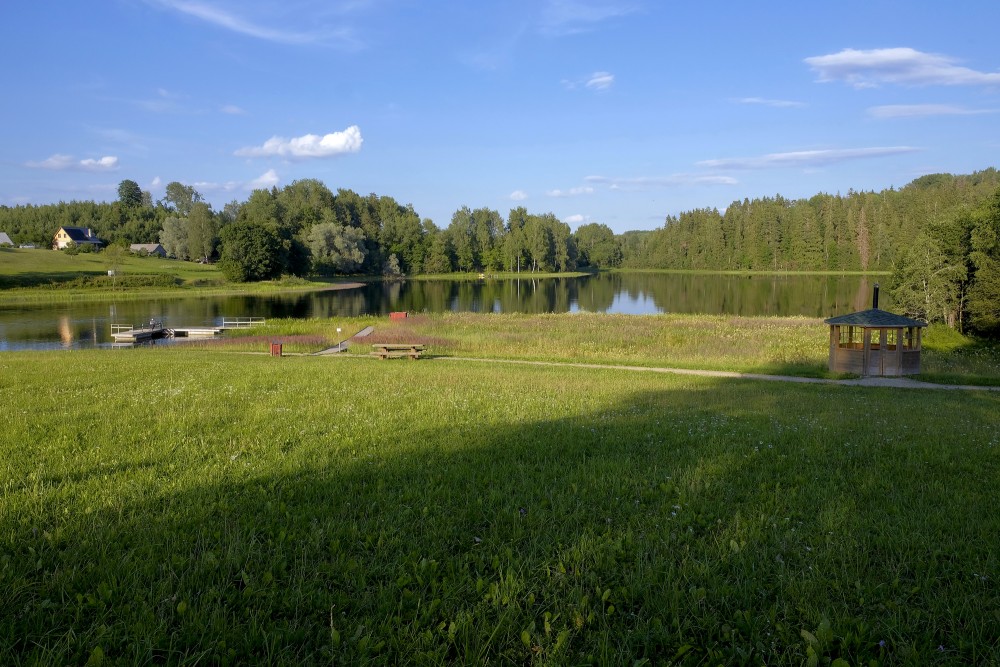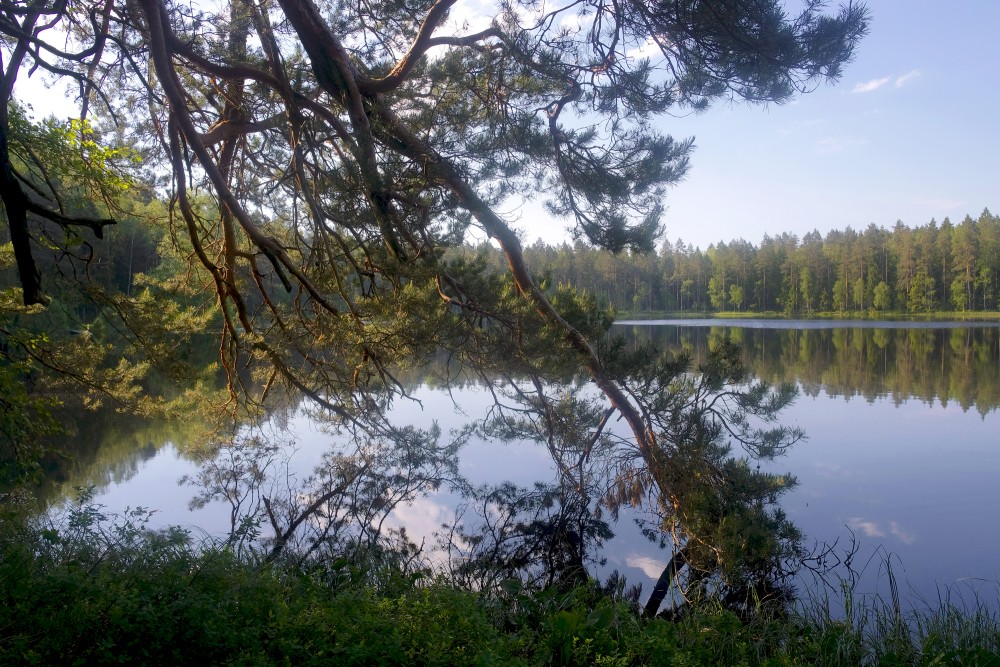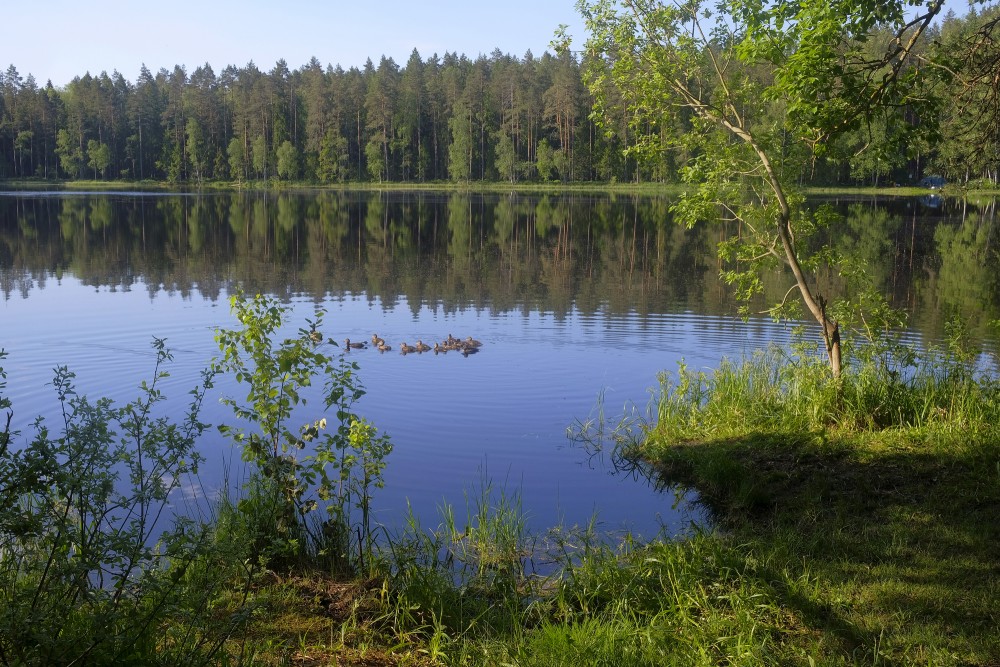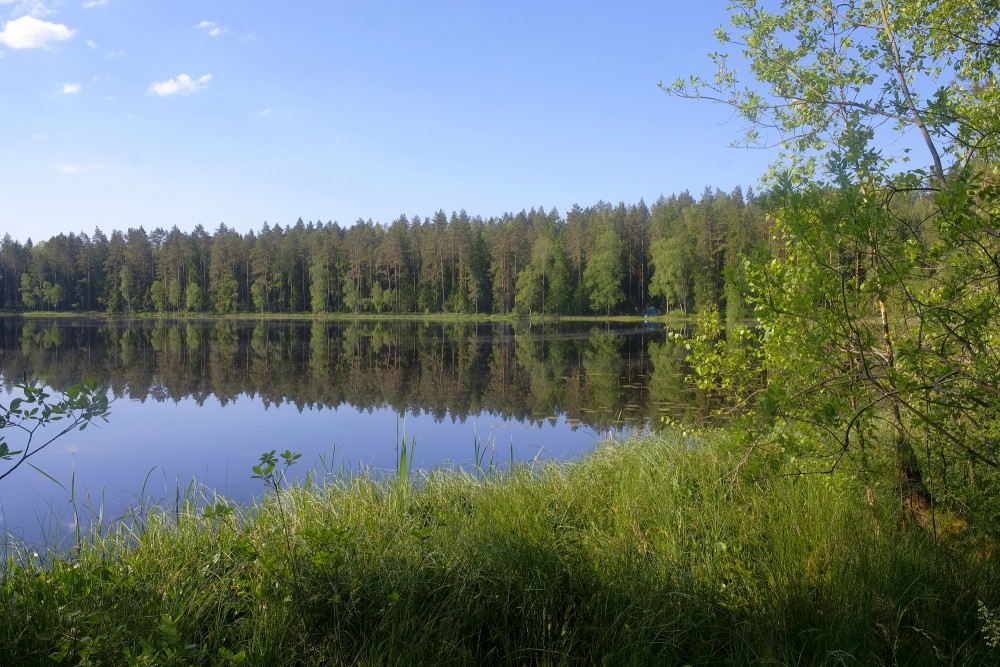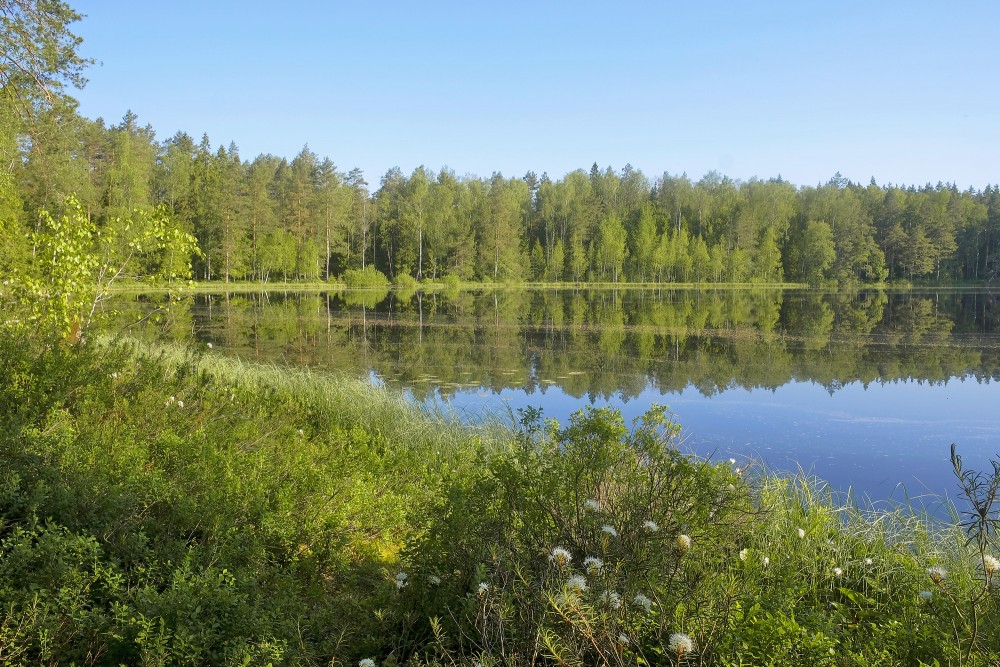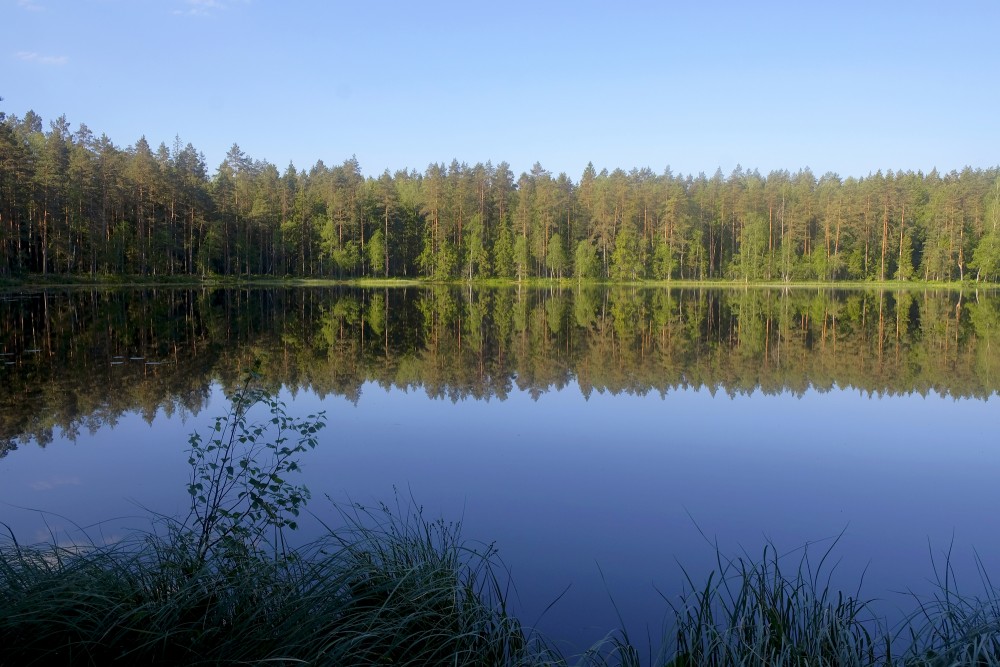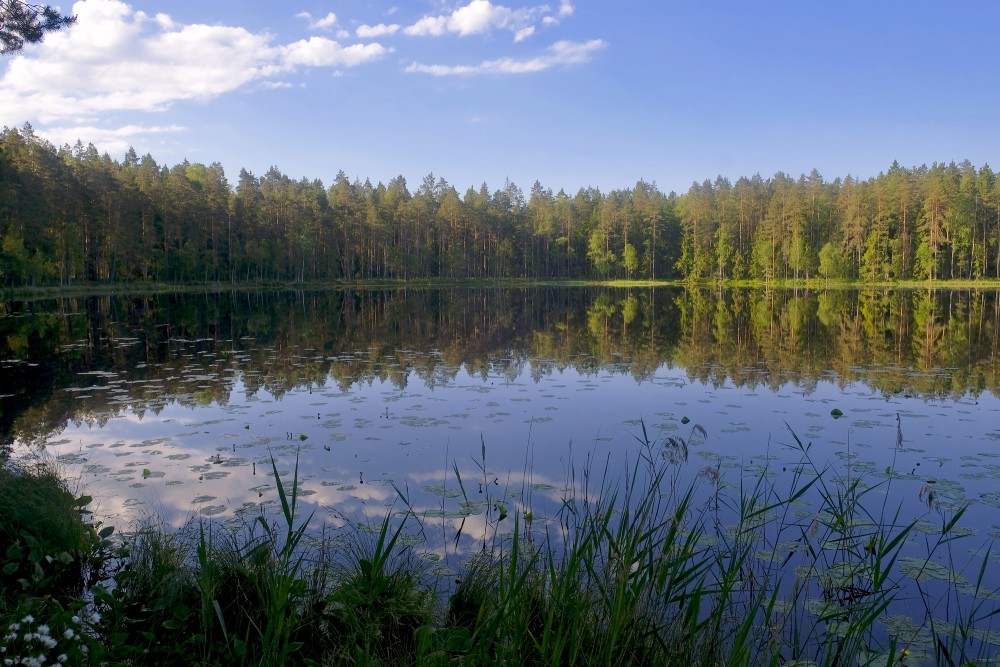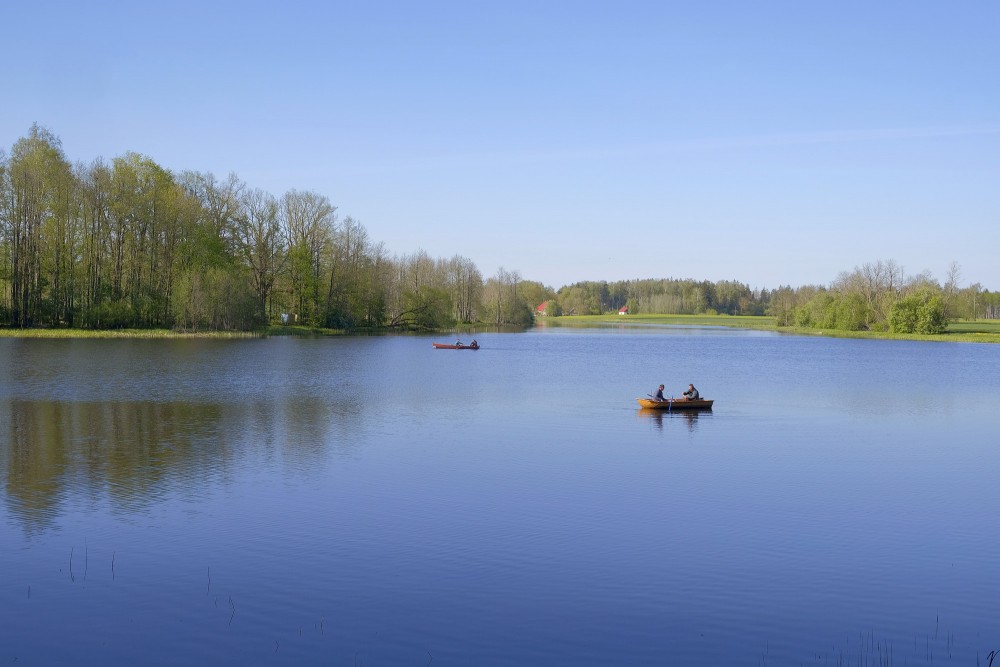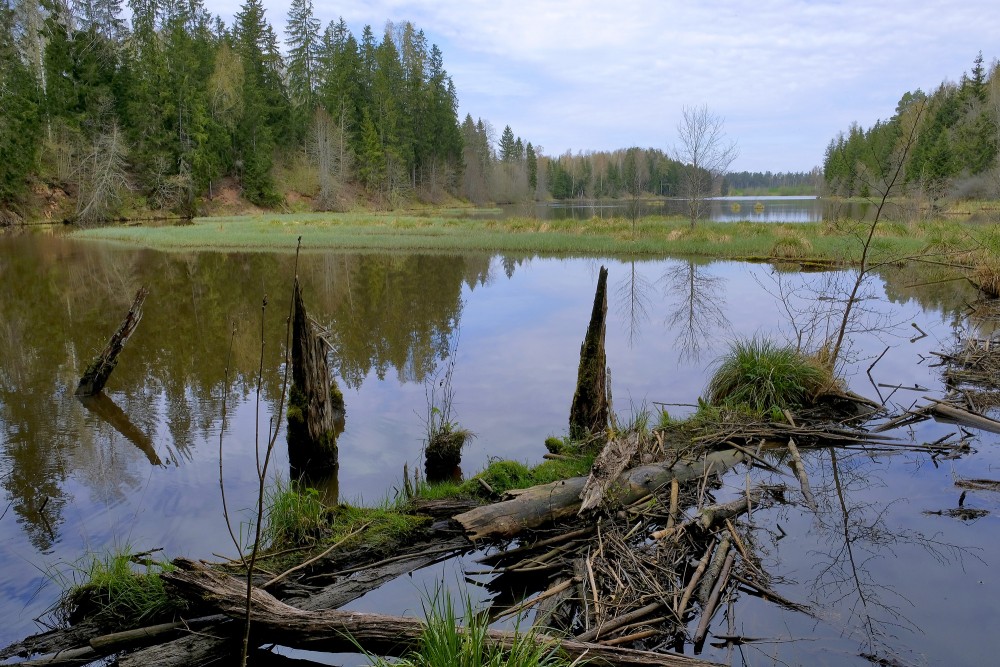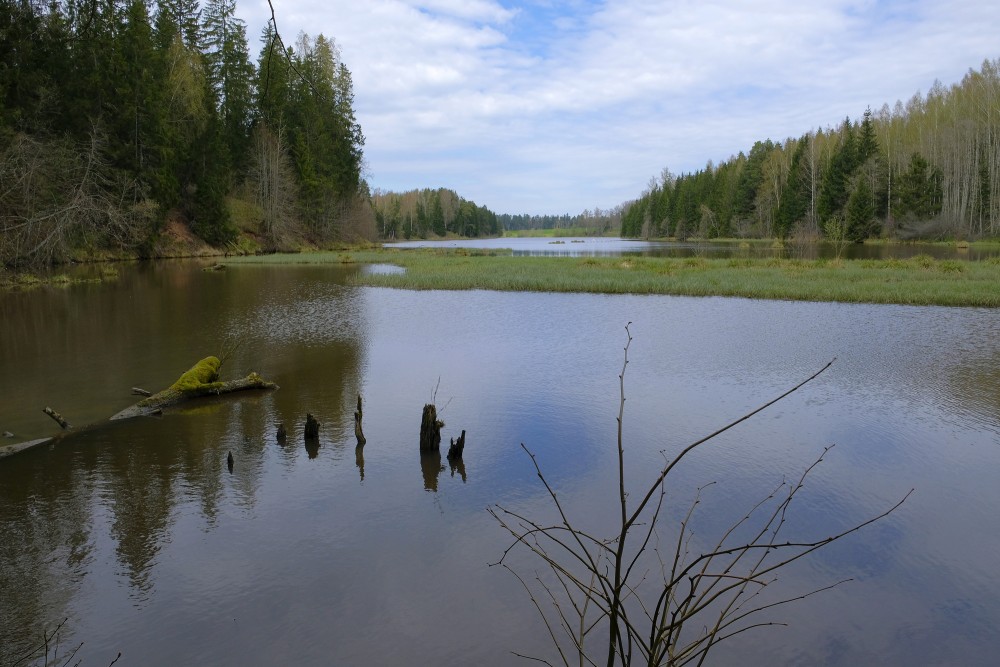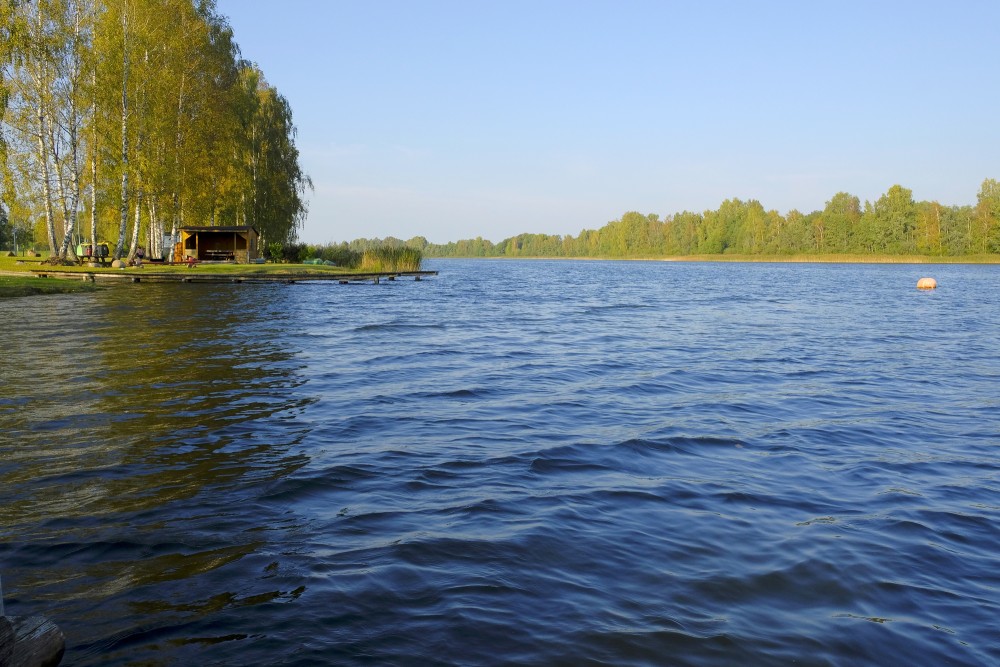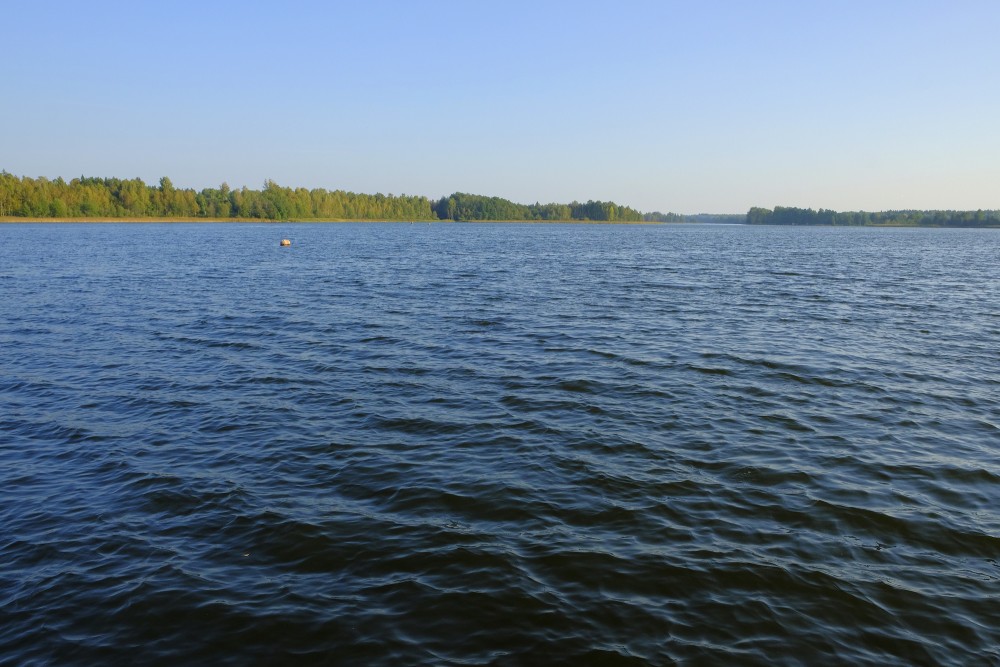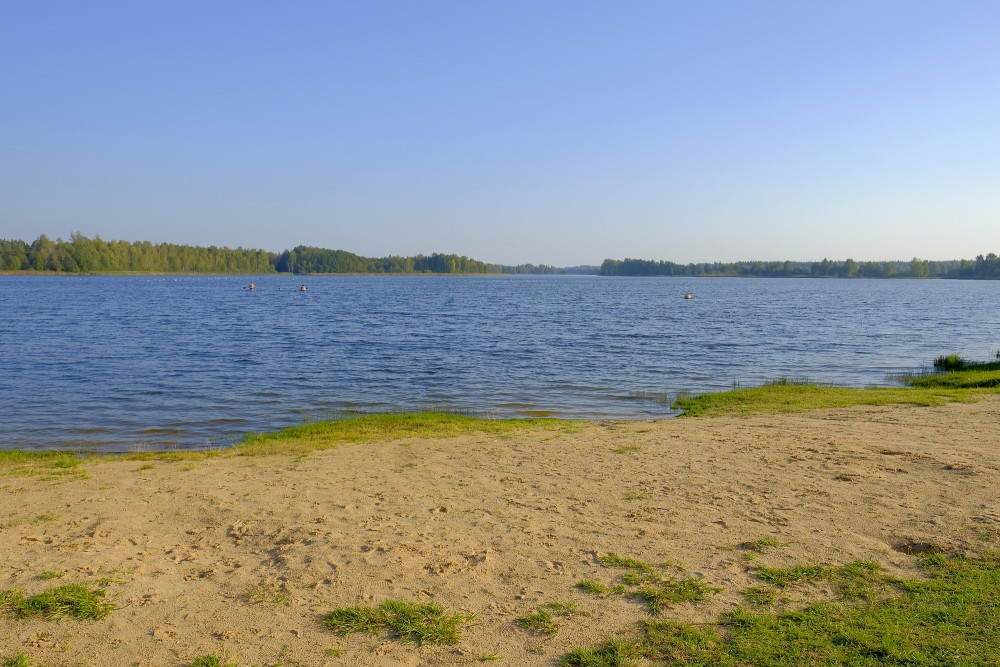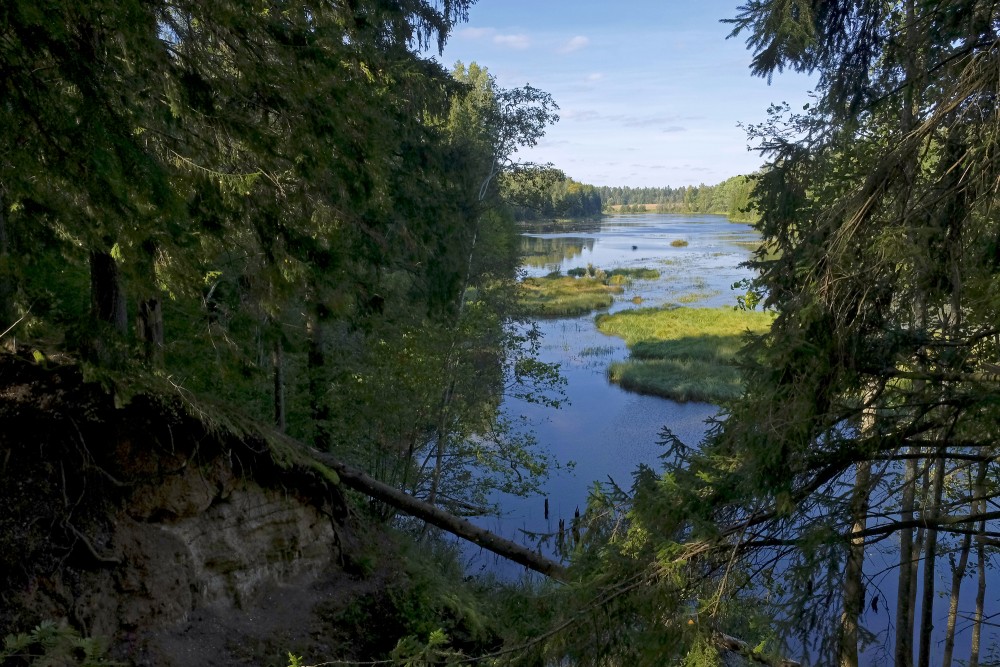Lake
A lake is an area filled with water, localized in a basin, that is surrounded by land, apart from any river or other outlet that serves to feed or drain the lake. Lakes lie on land and are not part of the ocean, and therefore are distinct from lagoons, and are also larger and deeper than ponds, though there are no official or scientific definitions. Lakes can be contrasted with rivers or streams, which are usually flowing. Most lakes are fed and drained by rivers and streams.
Natural lakes are generally found in mountainous areas, rift zones, and areas with ongoing glaciation. Other lakes are found in endorheic basins or along the courses of mature rivers. In some parts of the world there are many lakes because of chaotic drainage patterns left over from the last Ice Age. All lakes are temporary over geologic time scales, as they will slowly fill in with sediments or spill out of the basin containing them.
Many lakes are artificial and are constructed for industrial or agricultural use, for hydro-electric power generation or domestic water supply, or for aesthetic or recreational purposes or even for other activities.
Distribution of lakes
The majority of lakes on Earth are fresh water, and most lie in the Northern Hemisphere at higher latitudes. Canada, with a deranged drainage system has an estimated 31,752 lakes larger than 3 square kilometres (1.2 sq mi) and an unknown total number of lakes, but is estimated to be at least 2 million. Finland has 187,888 lakes 500 square metres (5,400 sq ft) or larger, of which 56,000 are large (10,000 square metres (110,000 sq ft) or larger).
Most lakes have at least one natural outflow in the form of a river or stream, which maintain a lake's average level by allowing the drainage of excess water. Some lakes do not have a natural outflow and lose water solely by evaporation or underground seepage or both. They are termed endorheic lakes.
Many lakes are artificial and are constructed for hydro-electric power generation, aesthetic purposes, recreational purposes, industrial use, agricultural use or domestic water supply.
Evidence of extraterrestrial lakes exists; "definitive evidence of lakes filled with methane" was announced by NASA as returned by the Cassini Probe observing the moon Titan, which orbits the planet Saturn.
Globally, lakes are greatly outnumbered by ponds: of an estimated 304 million standing water bodies worldwide, 91% are 1 hectare (2.5 acres) or less in area (see definition of ponds). Small lakes are also much more numerous than large lakes: in terms of area, one-third of the world's standing water is represented by lakes and ponds of 10 hectares (25 acres) or less. However, large lakes account for much of the area of standing water with 122 large lakes of 1,000 square kilometres (390 sq mi, 100,000 ha, 247,000 acres) or more representing about 29% of the total global area of standing inland water.
Origin of lakes
Hutchinson in 1957 published a monograph that is regarded as a landmark discussion and classification of all major lake types, their origin, morphometric characteristics, and distribution. As summarized and discussed by these researchers, Hutchinson presented in it a comprehensive analysis of the origin of lakes and proposed what is a widely accepted classification of lakes according to their origin. This classification recognizes 11 major lake types that are divided into 76 subtypes. The 11 major lake types are tectonic lakes, volcanic lakes, landslide lakes, glacial lakes, solution lakes, fluvial lakes, aeolian lakes, shoreline lakes, organic lakes, anthropomorphic lakes, and meteorite (extraterrestrial impact) lakes.
Tectonic lakes
Tectonic lakes are lakes formed by the deformation and resulting lateral and vertical movements of the Earth’s crust. These movements include faulting, tilting, folding, and warping. Some of the well-known and largest lakes on Earth are rift lakes occupying rift valleys, e.g. Central African Rift lakes and Lake Baikal. Other well-known tectonic lakes, Caspian Sea, the Sea of Aral, and other lakes from the Pontocaspian occupy basins that have been separated from the sea by the tectonic uplift of the sea floor above sea level.
Often, the tectonic action of crustal extension has created an alternating series of parallel grabens and horsts that form elongate basins alternating with mountain ranges. Not only does this promote the creation of lakes by the disruption of preexisting drainage networks, it also creates within arid regions endorheic basins that containing salt lakes (also called saline lakes). They form where there is no natural outlet, a high evaporation rate and the drainage surface of the water table has a higher-than-normal salt content. Examples of these salt lakes include Great Salt Lake and the Dead Sea. another type of tectonic lake caused by faulting is sag ponds.
Volcanic lakes
Volcanic lakes are lakes that occupy either local depressions, e.g. craters and maars or larger basins, e.g. calderas, created by volcanism. Crater lakes are formed in volcanic craters and calderas, which fill up with precipitation more rapidly than they empty via either evaporation, groundwater discharge, or combination of both. Sometimes the latter are called caldera lakes, although often no distinction is made. An example is Crater Lake in Oregon, in the caldera of Mount Mazama. The caldera was created in a massive volcanic eruption that led to the subsidence of Mount Mazama around 4860 BC. Other volcanic lakes are created when either rivers or streams are dammed by lava flows or volcanic lahars. The basin which is now Malheur Lake, Oregon was created when a lava flow dammed the Malheur River.
Glacial lakes
Glacial lakes are lakes created by the direct action of glaciers and continental ice sheets. A wide variety of glacial processes create enclosed basins. As a result, there are a wide variety of different types of glacial lakes and it is often difficult to define clear-cut distinctions between different types of glacial lakes and lakes influenced by other activities. The general types of glacial lakes that have recognized are lakes in direct contact with ice; glacially carved rock basins and depressions; morainic and outwash lakes; and glacial drift basins. Glacial lakes are the numerous lakes in the world. Most the lakes in northern Europe and North America have been either influenced or created by the latest, but not last, glaciation, to have covered the region. Glacial lakes include proglacial lakes, subglacial lakes, finger lakes, and epishelf lakes. Epishelf lakes are highly stratified lakes in which a layer of freshwater, derived from ice and snow melt, is dammed behind an ice shelf that is attached to the coastline. They are mostly found in Antarctica.
Fluvial lakes
Fluvial (or riverine) lakes are lakes produced by running water. These lakes include plunge pool lakes, fluviatile dams and meander lakes.
Oxbow lakes
The most common type of fluvial lake is a crescent-shaped lake called an oxbow lake due to the distinctive curved shape. They can form in river valleys as a result of meandering. The slow-moving river forms a sinuous shape as the outer side of bends are eroded away more rapidly than the inner side. Eventually a horseshoe bend is formed and the river cuts through the narrow neck. This new passage then forms the main passage for the river and the ends of the bend become silted up, thus forming a bow-shaped lake.
Fluviatile dams
These form where sediment from a tributary blocks the main river.
Lateral lakes
These form where sediment from the main river blocks a tributary, usually in the form of a levee.
Solution lakes
A solution lake is a lake occupying a basin formed by surface dissolution of bedrock. In areas underlain by soluble bedrock, its solution by precipitation and percolating water commonly produce cavities. These cavities frequently collapse to form sinkholes that form part of the local karst topography. Where groundwater lies near the grounds surface, a sinkhole will be filled water as a solution lake. If such a lake consists of a large area of standing water that occupies an extensive closed depression in limestone, it is also called a karst lake. Smaller solution lakes that consist of a body of standing water in a closed depression within a karst region are known as karst ponds. Limestone caves often contain pools of standing water, which are known as underground lakes. Classic examples of solution lakes are abundant in the karst regions at the Dalmatian coast of Croatia and within large parts of Florida.
Landslide lakes
Landslide lakes are lakes created by the blockage of a valley by either mudflows, rockslides, or screes. Such lakes are common in mountainous regions. Although landslide lakes may be large and quite deep, they are typically short-lived. An example of a landslide lake is Quake Lake, which formed as a result of the 1959 Hebgen Lake earthquake.
Aeolian lakes
Aeolian lakes are lakes produced by wind action. They are found mainly in arid environments although some aeolian lakes are relict landforms indicative of arid paleoclimates. Aeolian lakes consist of lake basins dammed by wind-blown sand; interdunal lakes that lies between well-oriented sand dunes; and deflation basins formed by wind action under previously arid paleoenvironments. Moses Lake, Washington, is an example of a lake basins dammed by wind-blown sand.
Shoreline lakes
Shoreline lakes are generally lakes created by blockage of estuaries or by the uneven accretion of beach ridges by longshore and other currents. They include maritime coastal lakes, ordinarily in drowned estuaries; lakes enclosed by two tombolos or spits connecting an island to the mainland; lakes cut off from larger lakes by a bar; or lakes divided by the meeting of two spits.
Organic lakes
Organic lakes are lakes created by the actions of plants and animals. On the whole they are relatively rare in occurrence and quite small in size. In addition, they typically ephemeral features relative to the other types of lakes. The basins in which organic lakes occur are associated with beaver dams, coral lakes, or dams formed by vegetation.
Peat lakes
Peat lakes are a form of organic lake. They form where a buildup of partly decomposed plant material in a wet environment leaves the vegetated surface below the water table for a sustained period of time. They are often low in nutrients and mildly acidic, with bottom waters low in dissolved oxygen.
Anthropogenic lakes
Anthropogenic lakes are artificially created lakes formed by human activity. They can be the result of intentional damming of rivers and streams or subsequent filling of abandon excavations by either ground water, precipitation, or a combination of both.
Meteorite (extraterrestrial impact/ crater) lakes
Meteorite lakes, which are also known as crater lakes, are lakes created by catastrophic extraterrestrial impacts by either meteorites or asteroids. Examples of meteorite lakes are Lonar crater lake, India, Lake Elgygytgyn, and Pingualuit crater lake, Quebec, Canada, As in case of Lake El'gygytgyn and Pingualuit crater lake, meteorite (extraterrestrial impact/ crater) lakes can contain unique and scientifically valuable sedimentary deposits associated with long records of paleoclimatic changes.
en.wikipedia.org
